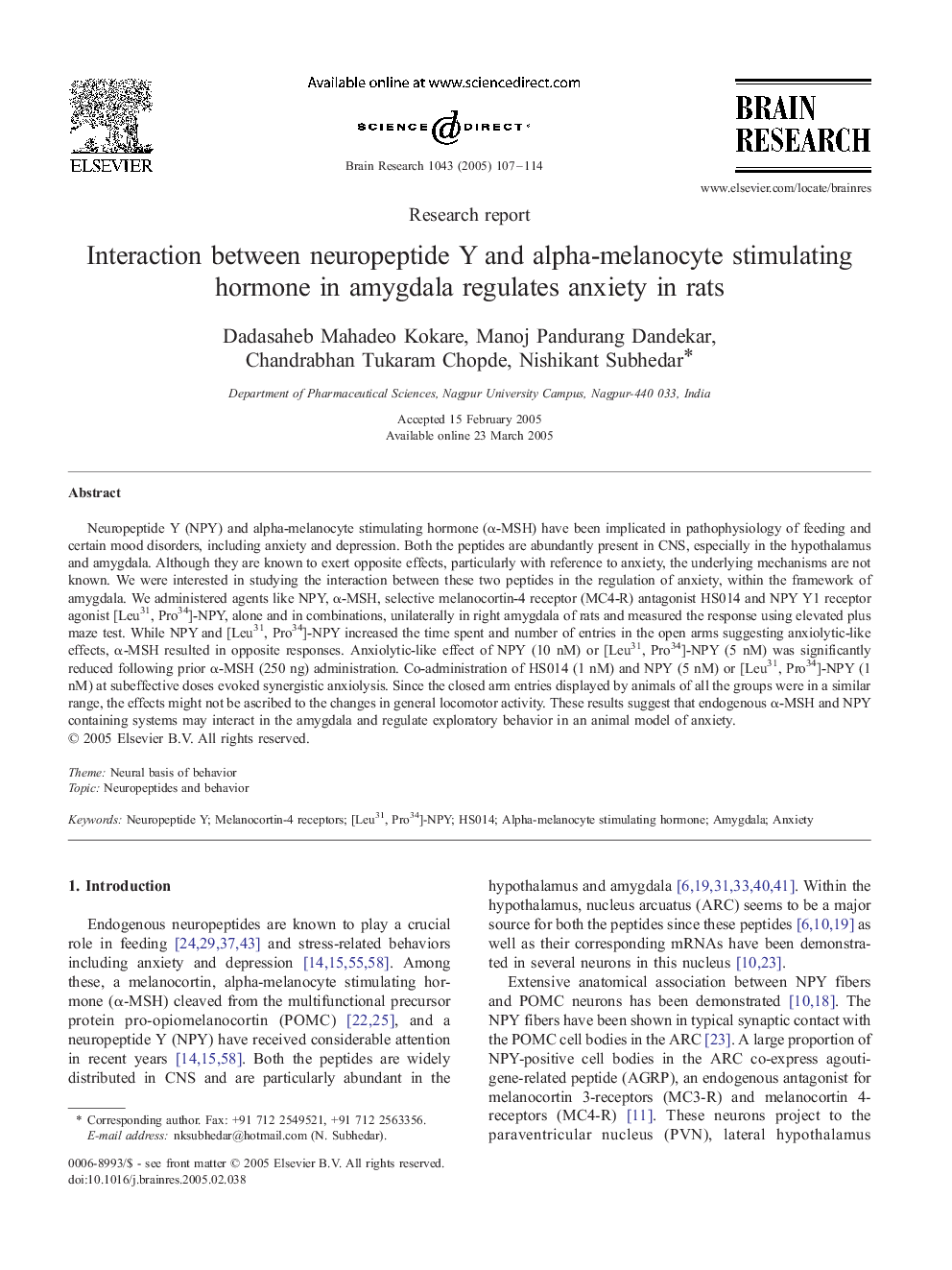| Article ID | Journal | Published Year | Pages | File Type |
|---|---|---|---|---|
| 9416424 | Brain Research | 2005 | 8 Pages |
Abstract
Neuropeptide Y (NPY) and alpha-melanocyte stimulating hormone (α-MSH) have been implicated in pathophysiology of feeding and certain mood disorders, including anxiety and depression. Both the peptides are abundantly present in CNS, especially in the hypothalamus and amygdala. Although they are known to exert opposite effects, particularly with reference to anxiety, the underlying mechanisms are not known. We were interested in studying the interaction between these two peptides in the regulation of anxiety, within the framework of amygdala. We administered agents like NPY, α-MSH, selective melanocortin-4 receptor (MC4-R) antagonist HS014 and NPY Y1 receptor agonist [Leu31, Pro34]-NPY, alone and in combinations, unilaterally in right amygdala of rats and measured the response using elevated plus maze test. While NPY and [Leu31, Pro34]-NPY increased the time spent and number of entries in the open arms suggesting anxiolytic-like effects, α-MSH resulted in opposite responses. Anxiolytic-like effect of NPY (10 nM) or [Leu31, Pro34]-NPY (5 nM) was significantly reduced following prior α-MSH (250 ng) administration. Co-administration of HS014 (1 nM) and NPY (5 nM) or [Leu31, Pro34]-NPY (1 nM) at subeffective doses evoked synergistic anxiolysis. Since the closed arm entries displayed by animals of all the groups were in a similar range, the effects might not be ascribed to the changes in general locomotor activity. These results suggest that endogenous α-MSH and NPY containing systems may interact in the amygdala and regulate exploratory behavior in an animal model of anxiety.
Keywords
Related Topics
Life Sciences
Neuroscience
Neuroscience (General)
Authors
Dadasaheb Mahadeo Kokare, Manoj Pandurang Dandekar, Chandrabhan Tukaram Chopde, Nishikant Subhedar,
